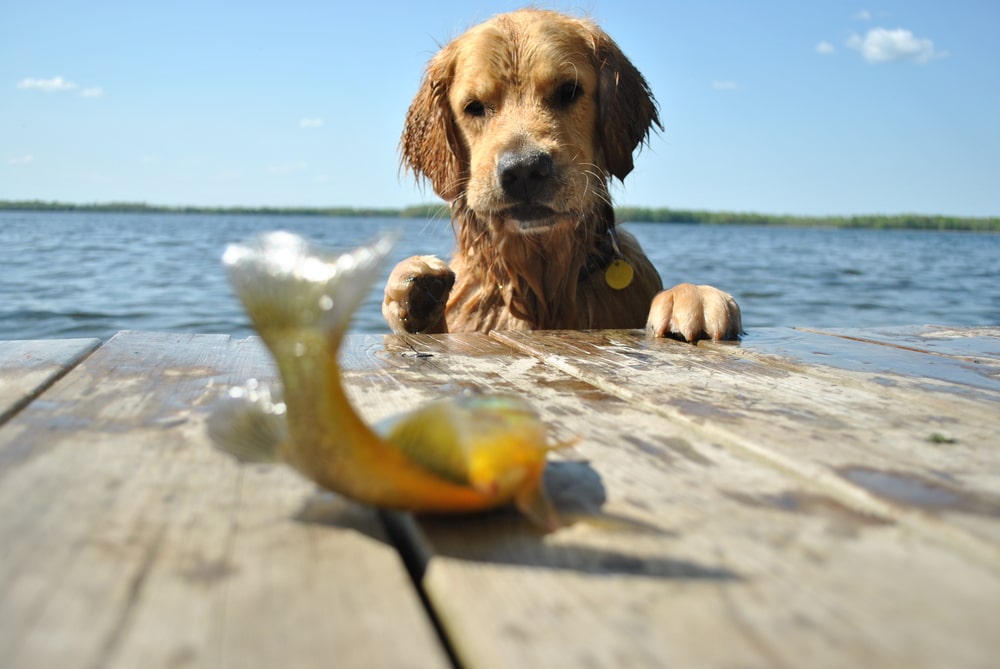Fish offers a lean, protein-packed meal option with health benefits for dogs. However, not all fish is necessarily safe. While fish flesh is generally fine for canine consumption, fish skin demands more caution. Understanding nutrition information, risks, and preparation methods allows you to safely incorporate fish into your dog’s diet.
Nutritional Benefits of Fish for Dogs
When safely sourced and prepared, fish provides excellent nutritional value for dogs, including:
- High-quality lean protein for building and maintaining muscle.
- Healthy omega-3 fatty acids to reduce inflammation and support coat health.
- Vitamins and minerals including selenium, vitamin B12, phosphorus, and magnesium.
- Low calorie density compared to red meats.
Fish is highly digestible and provides a nutrient powerhouse. Oily fish like salmon and sardines offer the most omega-3s.
Potential Risks of Feeding Fish to Dogs
While fish provides benefits, some potential risks are important to note:
- Small bones can present a choking hazard or pierce intestines.
- Heavy metal and toxin accumulation may occur in some fish varieties.
- Raw fish may harbor parasites like salmon poisoning disease.
- Fish allergies, while less common, can cause reactions.
- Too much fish can lead to vitamin E deficiency from depleted stores.
With sound preparation and fish variety selection, these risks can be minimized.

Tips for Serving Fish Safely to Dogs
Follow these tips for safely incorporating fish into your dog’s diet:
- Choose wild caught fish from unpolluted waters when possible.
- Remove all small bones, scales, fins and skin before cooking.
- Lightly steam, boil, or bake to destroy parasites versus raw preparations.
- Research mercury levels and avoid high-risk fish like tuna for frequent feeding.
- Introduce new fish proteins slowly in case of allergies or sensitivities.
- Limit fish to no more than one or two servings per week as a rotational protein source.
Can Dogs Eat Fish Skin?
Fish skin should be removed before feeding for a few key reasons:
- Fish skin may contain higher levels of toxins that accumulate in fatty tissues. This includes mercury and PCBs.
- The skin contributes significant fat calories compared to the lean flesh underneath. Avoid overfeeding.
- Sharp bones in fish fins are rooted in the skin and can injure dogs when consumed.
- The rubbery texture of cooked fish skin can be difficult for some dogs to digest.
For safety and balanced nutrition, peel off the skin along with all bones, scales and fins before preparing fish for your dog.
Best Fish for Dogs
Some of the top fish choices to benefit dogs include:
- Salmon – Rich in omega-3s but limit intake due to mercury concerns.
- Sardines – Low mercury levels plus high omega-3s makes these a great choice.
- Mackerel – Offers omega-3s, magnesium, potassium, niacin and CoQ10 antioxidant.
- Herring – Great source of vitamin D, protein and omega-3 fatty acids.
- Shad – Mild flavor and packed with protein, vitamin E, and magnesium.
Focus on smaller, oilier fish and introduce variety to keep mercury risk low with routine feedings.

Fish to Avoid for Dogs
Some fish pose more health risks and are better avoided, including:
- Tuna – High mercury levels are concerning with routine intake.
- Tilapia – Low omega-3 content provides less benefit.
- ** Salmon skin** – High in fat compared to the lean flesh.
- Raw fish – Carries bacteria and parasite risk.
- Fish from polluted waters – May contain toxins.
Stick with skinless, low mercury selections that are properly cooked.
Conclusion
Fish can provide healthy lean protein, vitamins, minerals, and omega-3 fatty acids when prepared properly. However, some varieties pose toxicity risks, while hazardous small bones and high-fat skin demand removal. Feed responsibly sourced, low mercury fish skinless and boneless for safe nutrition benefits. With informed selection and preparation, fish makes an excellent rotational protein addition.
Frequently Asked Questions About Dogs and Fish
How often can I feed fish to my dog?
Limit fish feeding to no more than one or two times a week. This prevents excessive toxin exposure while adding diet variety.
What if my dog eats raw fish or fish skin?
Monitor for vomiting, diarrhea or signs of intestinal distress. Contact your vet if symptoms occur as parasites may need treatment. Avoid giving more fish until recovered.
Are canned fish products safe for dogs?
Yes, select reputable brands with skinless, boneless fillets in water or oil. Rinse before feeding to remove excess sodium. Introduce gradually.
Can I give my dog fish I catch locally?
First ensure the source waters are toxin-free. Remove all bones, skin, and fins. Lightly cook flesh before feeding to kill any parasites present.
What if my dog has an allergy to fish?
Signs include skin issues, ear infections, vomiting, diarrhea, or itching around the mouth. Avoid feeding any fish products and alert your vet.



